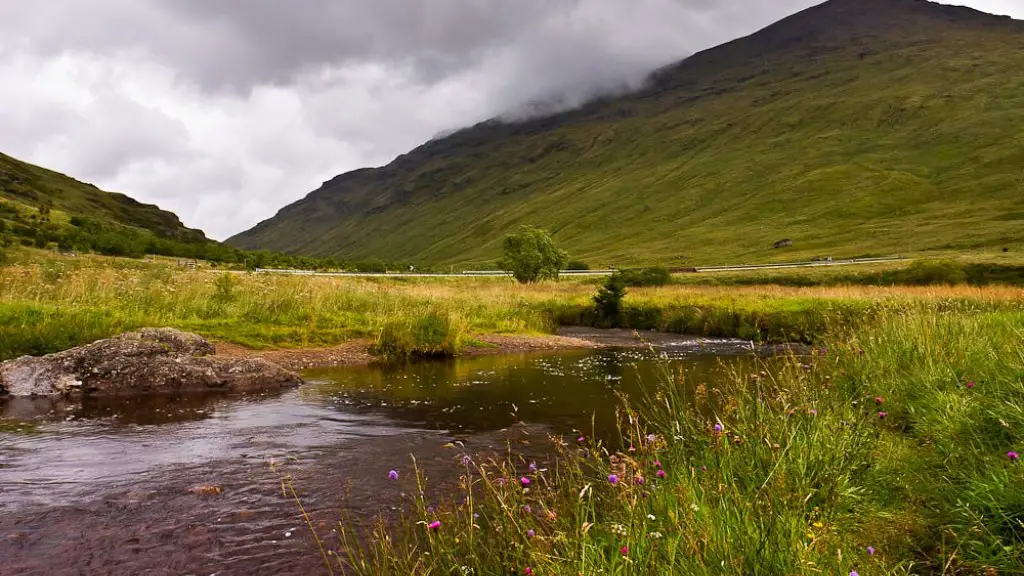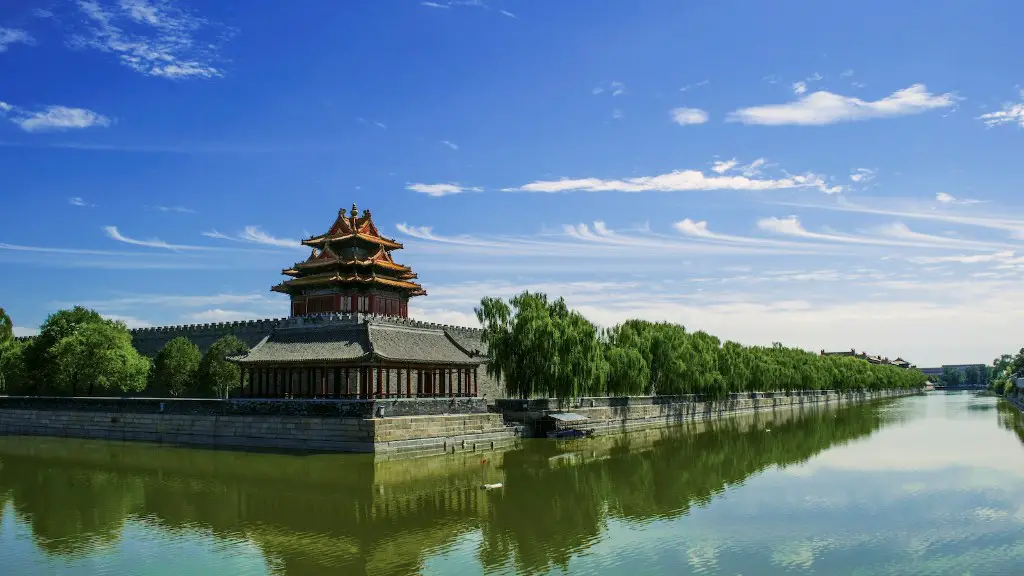The Mississippi River has been around for centuries, and its history is deeply intertwined with the history of the United States. Just as the United States has grown and changed, so has the Mississippi River, playing an integral role in the development of the country we know and love today.
The Mississippi River begins on the eastern edge of Minnesota and flows south for 2,300 miles until it reaches the Gulf of Mexico in Louisiana. As far back as 1680, the river was an important part of exploration and trade. The French explorers Louis Jolliet and Robert Cavalier travelled all the way down the river to the Gulf of Mexico in 1682, becoming the first Europeans to do so.
As the United States began to expand westward, the river made it possible to transport goods quickly and reliably. In the 19th century, steamboats travelled up and down the river, connecting people and places that had previously been isolated. This allowed the north and south of the country to communicate more easily, and helped to spark the rapid economic growth of the region.
During the American Civil War, the Mississippi River was an important route for troops, supplies and ammunition. On one side of the river, the Union forces sought to control the river as a way of cutting off the Confederate army from their sources of supplies. On the other side of the river, Confederate forces used the river as a way of defending their supply lines.
The Mississippi River also served as an important transportation route for African Americans during the period of Reconstruction after the Civil War. Thousands of former slaves used the river to escape to the northern states, in the search for a more favorable climate and greater opportunities.
In recent decades, the Mississippi River has been a site of intense environmental struggle. People living along the river have been affected by the environmental consequences of poor water quality caused by agricultural runoff, industrial pollution and human waste. Lawsuits have been filed against industry and government in an effort to protect the river’s fragile ecosystem and ensure that its future is a healthy one.
The Mississippi River plays an important role in navigation and trade, as it connects the Great Lakes to the Gulf of Mexico and provides access to ports and waterways throughout the interior of the United States. The river is lined with a number of locks and dams that regulate the flow of the water, allowing for ships and barges of various sizes to travel up and down the river.
The navigation system has been greatly improved since the early years of the river’s history, with the US Army Corps of Engineers significantly deepening the river’s channel in order to allow for larger ships and barges to pass through. This has led to an increase in trade between the industries along the river, as well as an increase in tourism to the area.
The Mississippi River is a major producer of agricultural products along its banks, including corn, soybeans, cotton, rice, and wheat. The river is also known for its fish populations, which range from catfish to bass and bluegill.
The navigation system of the Mississippi has also made it an important route for people travelling between states. Each year, thousands of tourists use the river as a way of travelling through the Midwest and the South, stopping at the cities and towns along the way.
Environmental Challenges
The Mississippi River is not without its environmental challenges. The river has been heavily polluted since the Industrial Revolution, and as recently as the 1950s, much of the river was considered to be “dead zones” due to the high level of toxic materials and nutrients found in the water.
In recent years, there has been a growing awareness of the need to protect the river from further environmental damage. Communities along the river have worked to reduce runoff and pollution, and the US Army Corps of Engineers has invested in technologies to restore the river’s health.
The river is also affected by climate change, which is leading to changes in water levels, shifting weather patterns, and decreases in water quality. To combat these effects, the US Army Corps of Engineers is investing in projects to mitigate the effects of climate change, including the construction of levees and floodwalls, the restoration of wetland habitats, and the installation of emergency generators in order to provide power in the event of a flood.
Cultural Significance
The Mississippi River has long been an important part of the cultural life of the people who live along its banks. From blues music to literature, the river has been a source of inspiration and a symbol of freedom for generations of Americans. The river’s folklore has been kept alive in books and songs, and it continues to be an important part of American culture today.
In addition to its cultural significance, the river is an important source of recreation. People travel to the Mississippi to fish, boat, and enjoy the beauty of nature. There are also numerous festivals and events held along the river throughout the year, ranging from music festivals to boat races.
The Mississippi is an iconic river, and its history is deeply intertwined with the history of the United States. From exploration and discovery to trade and culture, the river has served as an important source of growth and development for hundreds of years. As we look to the future, it is important to remember the importance of protecting this mighty river and its ecosystem, so that it can continue to bring prosperity and joy to those who live along its banks.
Ecological Charateristics
The Mississippi River is home to a vast array of wildlife, with over 200 species of fish and countless other animals and plants making the river their home. Not only is the river an important habitat for animals and aquatic life, but it also serves an important function in the global ecosystem. The river helps to regulate climate and water levels, and provides essential nutrients to the surrounding land and plants.
The river is home to a variety of species of birds, including pelicans, herons, egrets, and songbirds. Mammals along the river include beavers, otters, muskrats, and mink. Reptiles and amphibians such as turtles, frogs, and lizards also reside in the area, and provide a unique habitat for many species of predatory fish.
The health of the river is dependent on the health of its surrounding land. As the surrounding land is developed for human use, the biodiversity of the river is threatened. Conservation and restoration efforts are essential in order to protect this important eco-system and ensure that it remains a healthy environment for years to come.
Social Impacts
The Mississippi River has been, and continues to be, a source of social and economic development in the region. Communities along the banks of the river rely heavily on its bounty, as it provides essential resources such as fish, water and transportation networks. The river also serves as an important tourist attraction, drawing visitors from all over the world to experience its history and natural beauty.
The river has also been a source of conflict, as people fight over its control and use. For years, the US Army Corps of Engineers has been involved in negotiating access to the river between states, as well as between commercial and recreational users. Moreover, the river has been subject to significant pollution, leading to tension between industry and environmental advocates.
The Mississippi River is an important resource for the millions of people who live and work along its banks. It is essential that we protect the river, so that it may continue to serve as an economic and cultural touchstone for generations to come.
Future of the Mississippi
The future of the Mississippi River is uncertain, as it is subject to the impacts of climate change, over-fishing, pollution, and development. It is essential that we work to protect this vital resource and ensure its health for generations to come.
The US Army Corps of Engineers is one of the main forces working to ensure the future health of the river. The Corps has invested in technologies and initiatives designed to improve water quality and reduce pollution, while also providing access to the river for commercial and recreational users.
However, greater efforts are needed in order to ensure the continued health of the river. In addition to the efforts of the US Army Corps of Engineers, collective action is needed from industry, governments, and citizens in order to maintain the health of the Mississippi River.
The Mississippi River is an iconic symbol of American power and progress. It is our responsibility to ensure that this river is protected and its bounty enjoyed for years to come.





